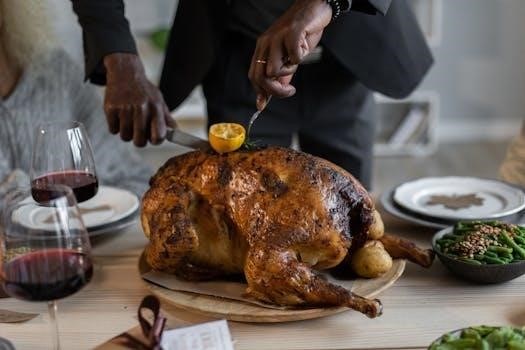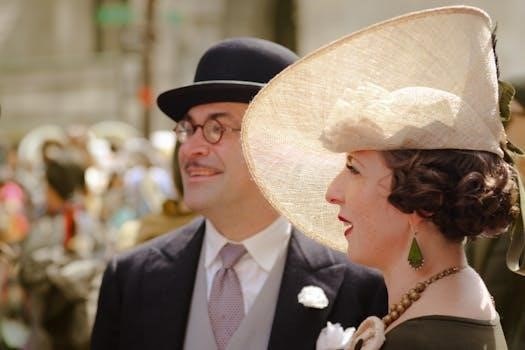The Potato Olympics provides an engaging, fun way for students to explore numeracy through various Olympic events. This unique activity uses potatoes as athletes, creating a playful context for learning. Students work individually or in small groups.
Concept and Purpose
The core concept of the Potato Olympics revolves around transforming ordinary potatoes into competing athletes. This imaginative approach aims to make learning about mathematics and the Olympics an exciting and memorable experience for students. The purpose extends beyond mere entertainment; it’s a strategic method to enhance students’ understanding and application of measurement and data analysis. Through a series of engaging events, participants collect data, which they then use to calculate statistical measures like mean, median, and mode. This activity encourages students to work both independently and collaboratively, fostering a deeper comprehension of mathematical concepts within a lively context, while also integrating elements of art and design.

Potato Athlete Creation
Students begin by selecting and decorating their potato athletes. This process involves character development, giving each potato a unique personality. Mathematical measurements are then taken for each potato.
Decorating and Character Development
The creation of potato athletes is a crucial step in the Potato Olympics. Students are encouraged to personalize their potatoes, transforming them into unique characters. This involves using various materials such as pens, toothpicks, and hot glue to add features like eyes and other decorations. This creative process allows students to develop a backstory for their potato, including character traits and a unique personality. This step is not just about aesthetics; it’s about fostering imagination and engagement with the activity, as students become invested in their potato’s success in the games. Each potato’s unique look contributes to the overall fun and excitement of the Potato Olympics.
Mathematical Measurements of Potatoes
Before the Potato Olympics commence, students engage in mathematical measurement of their potato athletes. This involves estimating and then accurately measuring various physical attributes, including height, weight, and girth. To determine weight, students use a pan balance, fostering an understanding of mass. These measurements are recorded and used later for analysis, contributing to a deeper understanding of data collection and interpretation. This practical application of mathematical concepts enhances the educational value of the activity, blending fun with learning. The recorded measurements also play a key role in comparing and contrasting the characteristics of each potato athlete.

Olympic Events
The Potato Olympics features diverse events, including distance rolling, basketball, and gymnastics. These events are designed to test the potatoes in different ways, encouraging both creativity and mathematical thinking through competition.
Distance Rolling Event
The distance rolling event in the Potato Olympics involves propelling a potato down a ramp and measuring how far it travels. To set up this event, you’ll need a small stool, a piece of MDF board (600mm x 900mm), and a 3-meter tape measure. The potato is released from the top of the ramp, and the distance it rolls is measured. This event is designed to test the potato’s momentum and the effects of the ramp. Students record the distances achieved by their potato athletes to compare their performance with others and to use it for data analysis. This event also allows students to make predictions and test their hypotheses.
Basketball Event
The Potato Olympics basketball event requires participants to create a hoop and then attempt to score points with their potato athletes. Students will need to construct their hoops using available materials, encouraging creativity and problem-solving. The goal is to successfully launch or toss the potato through the hoop. This event highlights spatial awareness and hand-eye coordination. Participants will record how many successful shots their potato makes. The basketball event is a fun way to add some active movement and competition into the Potato Olympics. Teams will compare the performance of their athletes and celebrate their successes.
Gymnastics Event
The Potato Olympics gymnastics event is a creative challenge where students design a routine for their potato athletes. This event encourages students to think outside the box and come up with inventive ways for their potatoes to perform. Students might create ramps or obstacles to represent a gymnastic course; The potato can be carefully moved through the course, judged on presentation and completion. The gymnastics event requires planning, design skills, and imagination. This aspect of the Potato Olympics focuses on creativity rather than numerical results. Students can present their athletes’ routines to the class and celebrate individual creative achievements.

Data Collection and Analysis
After each event, students record their potato athletes’ results. This data is used to create leaderboards and analyze event outcomes. Students also calculate mean, median, and mode.
Recording Results and Creating Leaderboards
Accurate data recording is essential to the Potato Olympics, ensuring that each potato athlete’s performance is properly documented. Teams utilize score sheets to record measurements from every event, such as distance rolled or baskets scored. This meticulous record-keeping forms the basis for creating leaderboards, which visually display the standings in each event. The leaderboards can be constructed in various ways, perhaps using tally marks or ranking lists. Furthermore, a combined leaderboard can determine the overall champion by summing the points or ranks across multiple events. This process not only promotes data literacy but also fosters a sense of competition and teamwork among the participants. This stage allows for identification of winners and provides a platform for data analysis;
Calculating Mean, Median, and Mode
After recording results, the Potato Olympics extends to statistical analysis, with a focus on calculating mean, median, and mode. Students learn to determine the average performance (mean) for each event using their collected data. They also find the middle value (median), which provides a different perspective on central tendency. Finally, identifying the most frequent result (mode) helps understand the most typical outcome. These calculations are applied individually to each event and across the whole set of data, deepening understanding of statistical concepts. This analysis is an important step to show the students the different ways the same data can be represented and viewed.
Creating Graphs
Following the calculation of mean, median, and mode, students will visually represent their findings through graphs. This could include creating bar graphs to show the comparison of mean distances in the distance rolling event or pie charts to demonstrate personal spud information or performance. Line graphs can be used to show changes in potato performance over the course of the event or to compare different events. This encourages students to explore data visualization and to communicate their findings in a clear and concise manner. The choice of graph type will be suitable for the type of data collected.

Educational Integration
The Potato Olympics seamlessly integrates math, science, language arts, and social studies into one comprehensive lesson. This interdisciplinary approach enhances learning through practical application and engagement.
Math, Science, Language Arts, and Social Studies
The Potato Olympics offers a rich, integrated learning experience across multiple subjects. In math, students measure potato dimensions, calculate distances, and analyze event results using mean, median, and mode. Science comes into play through the exploration of physics in rolling and launching events, and the properties of materials used for obstacles. Language arts are strengthened through writing athlete biographies and creating event descriptions. Social studies is engaged by learning about the history and traditions of the Olympics and creating a collaborative team environment. This cross-curricular approach ensures a holistic and engaging educational experience.
